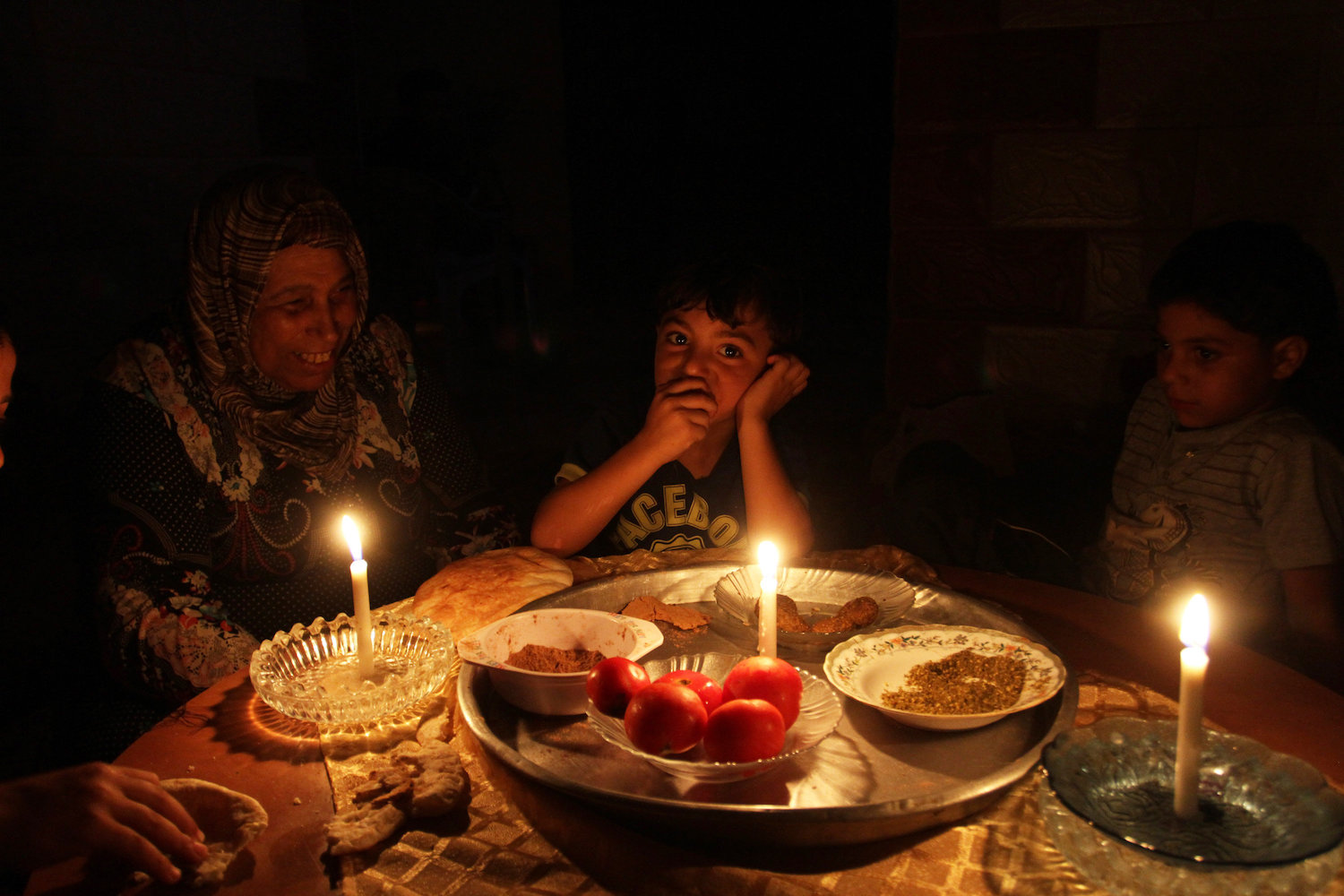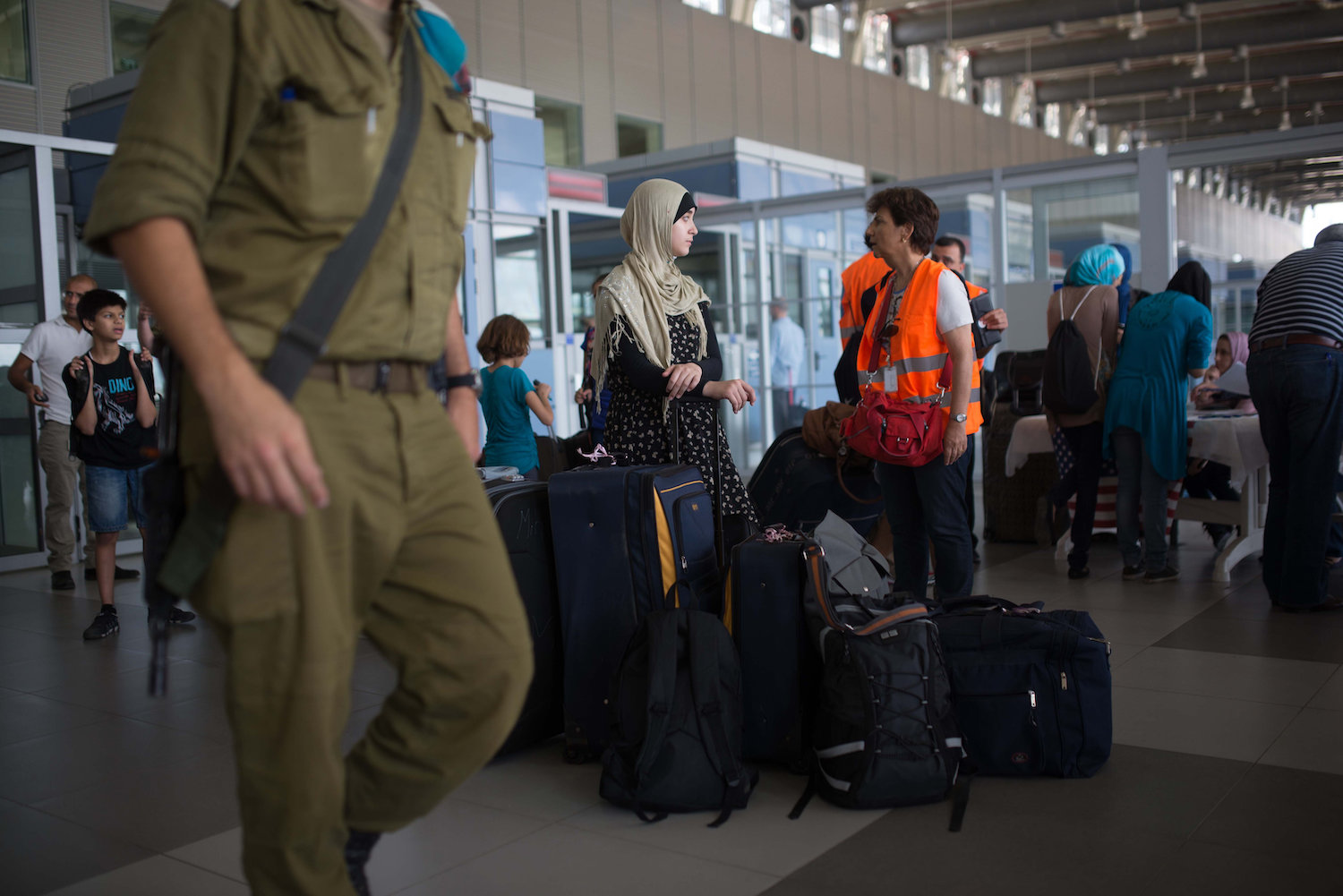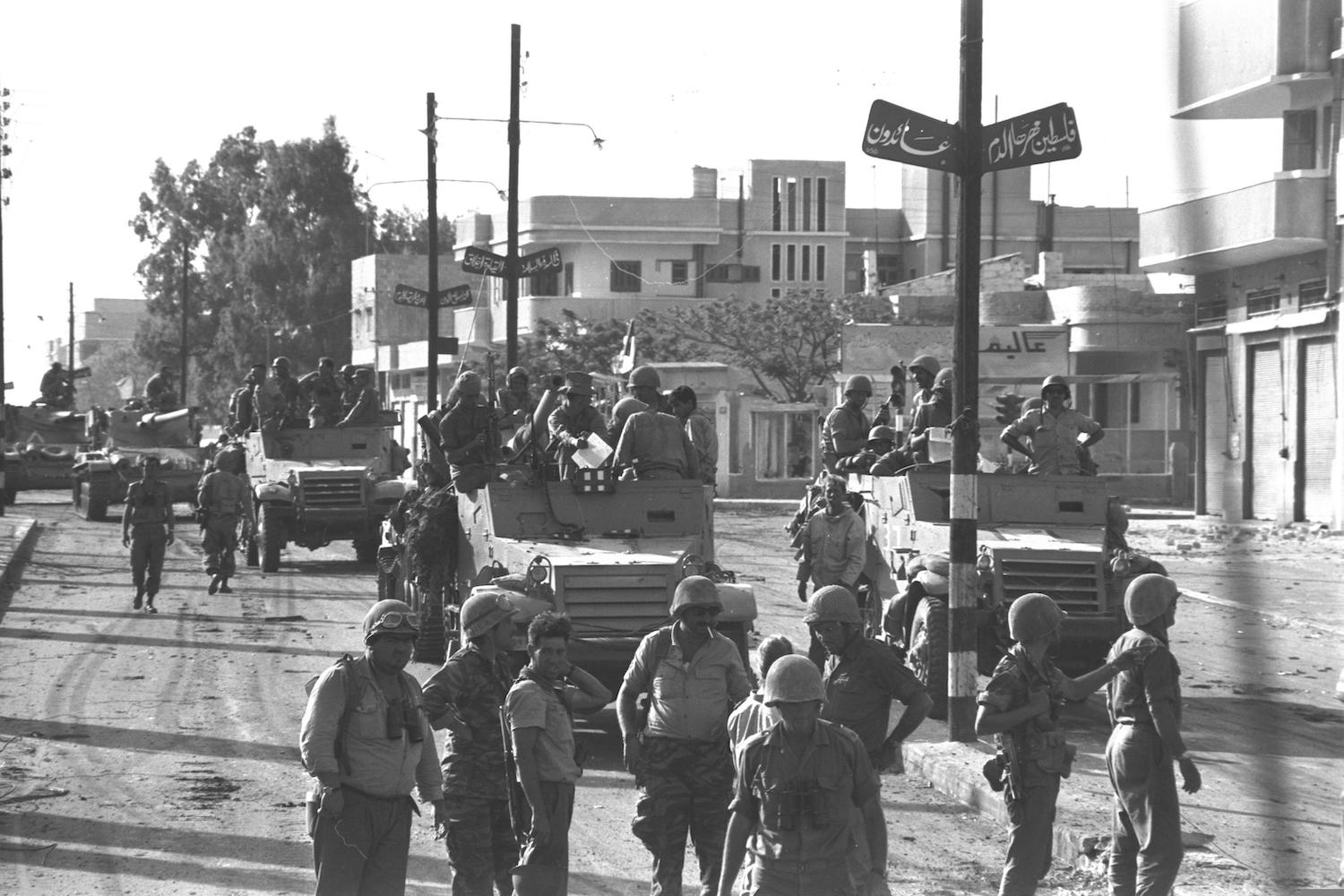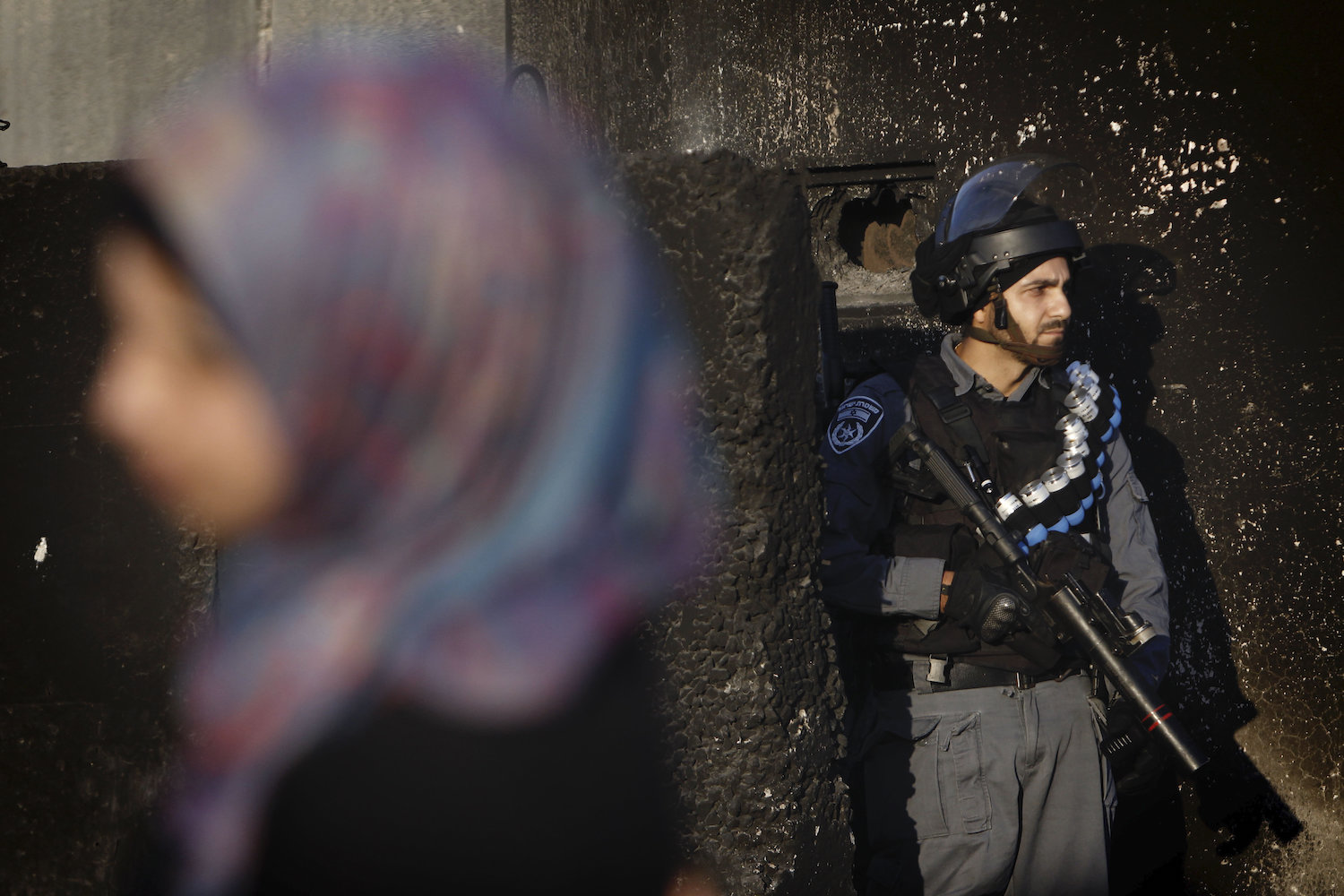‘Gaza is a one-way ticket’: How Israel’s relocation policy is separating Palestinian communities
Israel is systemically routing Palestinian movement in one direction — from the West Bank to Gaza. Families and advocates say the silent transfer is splintering Palestinian society.
But at Erez, Saoud was told to go back home. Pleading with the Israeli army officers did not help. The crossing, which separates Israel from the Gaza Strip, was closed for the day, likely for the Jewish holiday of Purim. Only exits for exceptional “humanitarian cases” — such as urgent medical care — would be permitted.
Saoud was devastated. She had already sold her house and belongings. She had nowhere to go. Saoud, who grew up in the West Bank, moved to Gaza in 2005 after marrying a Palestinian from the strip. But her husband had left for Turkey last December in search of work opportunities. Without immediate family to provide her shelter, Saoud suddenly found herself homeless.
With the crossing still closed, Saoud asked her brother-in-law if she and her children could stay with them until her case was resolved. Her brother-in-law is unemployed, and while sheltering in his house, she used the money from selling the house to provide for the two families. “I have eaten one meal in the past four days. I’m on the verge of a nervous breakdown,” she says over the phone.
On March 12, after Gisha, an Israeli human rights group that focuses on freedom of movement in and out of Gaza, filed an urgent appeal with the Jerusalem district court, Saoud was let through the crossing.
That same week, Israel restricted travel for Palestinians from Gaza even further to curb the spread of the new coronavirus. Then in late May, in response to Israel’s imminent plans to annex parts of the West Bank, the Palestinian Authority announced it was ending its coordination with Israel, including for travel permits. The guidelines for filing such requests remain unclear.
But even when movement for Palestinians was allowed, its limitations were so severe that it effectively reengineered the fabric of Palestinian society in the occupied territories, critics say. It was set up to flow in one direction — to Gaza — which, according to a new position paper by Gisha, could amount to the crime of forcible transfer of an occupied population under the Fourth Geneva Convention.
Understanding this policy, these analysts add, sheds light on the potentially devastating impact of Israeli annexation on Palestinians.
‘I tell her I’ll be back soon with sweets’
Like Saoud, Shada Shendaghli was born in the West Bank and married a man originally from Gaza. Shendaghli’s husband, Issam, returned to the strip in October 2016, and she followed him two months later. They now have two daughters, Masa and Rithal, who are both registered as West Bank residents.But Shendaghli found life in the strip unbearable, Issam admits in a phone call. The power cuts were constant, and they would have water only two or three days a week. “We lack the basic comforts that people in the West Bank have. She couldn’t adjust,” he says.

Shendaghli was determined to go back to Ramallah. She applied for a permit but the Israeli army denied the request, claiming she had agreed to give up her West Bank residency and relocate to Gaza.
When Gisha filed a petition on her behalf, the Coordinator of Government Activities in the Territories (COGAT), the military body that administers the occupation, argued she was now registered as a Gaza resident, and thus had no right to return to her home in the West Bank.
Israel’s denial of people’s right to move freely violates international law, says Gisha spokesperson Miriam Marmur. “It means that countless Palestinians are unable to choose where in the occupied Palestinian territory they will live, work, and build a family.”
Shendaghli’s legal battle came to an end in June 2019 when she was permitted to move back to the West Bank with her daughters. But the move came at the cost of being separated from her husband.
The day the family left, Issam recalls feeling “broken.” His whole life has changed, he says. “Now I rush to plug my phone in the charger when I get home from work, counting the seconds before I can talk to them.”
“My daughter keeps crying, asking me to come home,” he continues. “I tell her I’m on my way, that I’m off to get her another doll, that I’ll be back soon with sweets.”
Between 2009 and 2017, Israel processed and approved only five resettlement applications for Gaza residents, all following legal intervention on behalf of the applicants. Of these five, four involved minors who had no relatives to care for them in Gaza. By contrast, between 2011 and 2014, COGAT approved 58 applications by West Bank residents requesting to relocate to Gaza (51 of which were filed by women).
“Israel is trying to make sure as few Palestinians as possible live in the West Bank,” states Marmur. “For a Gaza resident to move to the West Bank, he or she must meet exceedingly narrow criteria, which are basically impossible to meet. For a West Bank resident to move to Gaza, on the other hand, all he or she must do is sign the ‘settlement procedure.’”
The settlement procedure is a document that Palestinian residents of the West Bank are made to sign upon their entry to the strip, in which Israel conditions their permission to enter on a declaration that they intend to transfer their “center of life” to Gaza permanently. They will only be allowed to re-enter the West Bank in “rare humanitarian cases,” the document continues. In signing this agreement, Palestinians effectively forfeit their West Bank residency.
This process was created by the Israeli army in 2009 following a High Court order, as a way of managing the relocation of Palestinians from one part of the occupied territories to another. But since it was introduced, movement from Gaza to the West Bank has become “almost impossible,” says Dani Shenhar of HaMoked, an Israeli legal aid organization. Not a single case that the organization has worked on over the past decade that involved a Gaza resident applying for resettlement has been successful, he adds. “Gaza is a one-way ticket. If you move there, you won’t come back.”
As a result, says Shenhar, HaMoked has stopped accepting such cases “because we get stuck. The courts basically accept the Israeli premise, and it’s very difficult to argue this situation.”
COGAT ignored a request by +972 Magazine for data on the number of address change applications it had received, approved, and denied by Palestinians from Gaza since 1967, when it occupied and began administering the territory. It also did not disclose how many Palestinians were made to sign the settlement waiver, or answer why their entry to Gaza requires them to give up their residency status.
Instead, COGAT wrote in an email that, since Hamas came to power in Gaza in 2007, “the State of Israel has instituted a policy of differentiating between the Gaza Strip and the Judea and Samaria area [Israel’s term for the West Bank] — and accordingly, it has been decided to limit passage between the Gaza Strip on the one hand, and the Judea and Samaria area, as well as Israel on the other hand, to only those humanitarian cases and exceptional cases that meet Israel’s set procedures.”

But despite what it may claim, Israel’s reasons for separating Gaza and the West Bank are political, not security-based, says Tareq Baconi, an analyst at the International Crisis Group. This is even more evident considering that Israeli restrictions on the strip began in 1989 during the First Intifada, years before Hamas rose to power, he explains.
The fragmentation of Palestinian society has been exacerbated by the political divide between Fatah and Hamas, which have both internalized this separation and are ensuring it persists, adds Baconi. “The reality is so different between the two places that even the political awareness has changed,” he notes, so much so that “the Gaza Strip might as well be a different planet for West Bankers.”
While the level of suffering there is unprecedented, Gaza should not be exceptionalized, Baconi argues. “The Gaza Strip is simply an extreme version of Area A [the West Bank enclaves under full Palestinian control]. It’s an extreme version of Kufr ‘Aqab [in East Jerusalem]. It’s an extreme version of Umm al-Fahm [a Palestinian city in Israel], in the sense that what we have throughout this land is a process of Israeli control of territories surrounding Palestinian bubbles.”
While the end-goal of that policy may be unknown, the strategy of confining Palestinians to urban silos and minimizing movement between them is “classic divide and rule — it’s 101 of colonialism,” says Baconi.
Two distinct occupied territories
In the absence of a relocation mechanism, Palestinians have had to find other ways to reunite with their families in the West Bank. In a June 2010 letter to HaMoked from Col. Uri Mendes, COGAT’s commander of coordination and operations, Israel estimated that around 35,000 Palestinians whose registered address is Gaza may be living in the West Bank. Israel classifies them as criminal infiltrators, which further ensnares them in a bureaucratic bind.One of those residents is Rawan, who moved to Ramallah in 2018 to live with her husband, a Palestinian from Gaza who was already living in the West Bank. To start a life together, she arrived on a one-day medical permit authorized by the Israeli army and stayed past the deadline, despite the consequences.
For Rawan, even the simple task of leaving her Ramallah home to buy bread turned into a precarious undertaking. One evening two years ago, the Israeli army had placed Ramallah under military closure to prevent “copycat” attacks, after Palestinians carried out deadly drive-by shootings in nearby settlements. “I thought I was hallucinating at first,” says Rawan. “I couldn’t get out of bed for a week after that.”
Even though Rawan moved to an area supposedly under Palestinian rule, if caught, the Israeli army could arrest, jail, and deport her back to Gaza — which is why she asked to be identified only by her first name. For Rawan to live in the West Bank while abiding by Israel’s military laws, she must change her address in the Palestinian population registry. Even though she files that request with the PA’s Civil Affairs office, the change only becomes valid once Israel approves it.

After occupying East Jerusalem, Gaza, and the West Bank in 1967, Israel conducted a census and issued identification documents for Palestinians it recorded in a population registry. With the signing of the second Oslo Accord (“the Taba Agreement”) in 1995, the control of the registry was transferred to the newly-formed Palestinian Authority. In practice, however, the Israeli army continued to operate based on their copy of the registry.
In September 2007, a few months after Hamas took control of Gaza and two years after Israel “disengaged” from the strip, the army imposed severe restrictions on the movement of people and goods in and out of the coastal enclave, which Israel had by then placed under blockade. A year later, in response to an inquiry by HaMoked, a spokesperson for COGAT claimed that the army now considered the West Bank and Gaza as two distinct, separate territories. As such, requests for change of address can only be approved by senior officials in exceptional humanitarian circumstances.
In 2011, as an exceptional political gesture to the Middle East Quartet Representative Tony Blair, Israel agreed to authorize the requests of 5,000 Gaza residents wishing to change their address to the West Bank. According to Gisha, by the end of that year, Israel processed around 2,775 applications from a total of 3,700 submitted by the Palestinian government.
The full scope of Israel’s separation policy is unclear because the authorities have consistently refused to release information about the number of people directly affected by it. When asked by +972 Magazine why it continues to control the population registry for Gaza residents, given that Israel claims to no longer occupy the strip, COGAT replied that the registry is “not under the authority of the Civil Administration.”
‘We are running out of time’
Shortly after Rawan arrived in the West Bank in January 2018, she began looking for a job. “I have to work. I’m the kind of person who can’t keep still,” she says at a Ramallah coffee shop.She eventually found a job with a group providing services for women in Jericho. But the job required her to travel to Area C of the West Bank, which is under full Israeli control and where soldiers freely patrol Palestinian communities. Working outside Ramallah meant Rawan risked being caught and deported any day. “I want to live my life. I want to work. So, I trusted in Allah. But deep inside, I was terrified,” she says.
Every time Rawan crosses an Israeli checkpoint, “I feel as though my life is about to end.” She jokes about how the fear and stress of trying to change her address are so immense that they have affected her ability to get pregnant; she can feel her body tense up.
Rawan says she applied for a stay permit with the Palestinian Civil Affairs office, but is uncertain what will happen with it now that the PA has ended its coordination with Israel. When it is time to face an Israeli soldier, she jokes, she is willing to negotiate her family’s land in the destroyed Palestinian village of Isdud (in present-day Ashdod), where her family is originally from, in exchange for a permit.

“My parents are working so that we all leave Gaza. We all want to leave; the situation there is unbearable,” says Rawan. “For Israel, anyone from Gaza is a terrorist. But I want to live my life. I want to enjoy life. We are running out of time.”
According to Rawan, an employee of the Civil Affairs office in Ramallah told her that the only way she can obtain residency is by giving sexual favors to a local Palestinian leader. Another Palestinian Interior Ministry staffer said her best shot is to work with a collaborator linked with Israeli security agencies.
In a position paper published by Gisha and HaMoked in 2009, the organizations warned that the settlement procedure “establishes a method of processing applications which is based on personal connections and arbitrary decisions that lack transparency.”
This ambivalence and sense of corruption is intentional, says Dr. Yael Berda of Hebrew University in Jerusalem, now a visiting assistant professor at Harvard University’s Sociology Department. “I call it ‘effective inefficiency,’” she explains. “That type of uncertainty is particularly effective when you want to slow down people’s movements, control them, and create fear and suspicion.”
Berda notes that such population control has precedent in Israel. Between 1948 and 1966 — just months before the 1967 occupation began — Israel employed a military government to rule over the tens of thousands of Palestinians who had remained inside the newly-established state. Even though they were granted Israeli citizenship, these communities were placed under curfew and could only travel by permit.
Israel’s permit regime and separation policy are thus far from a unique invention; “It’s a very colonial and imperial way to subdue populations,” explains Berda. Still, she adds, Israel has taken that colonial repertoire “to an extreme, because it is the most sophisticated population management system in the world right now.”
For Baconi, annexation cannot be understood separately from the Gaza blockade, which in turn cannot be disconnected from the practices affecting Palestinian refugees and citizens of Israel. “These are all policies aimed at ensuring the least number of Palestinians are in the land, the most land is controlled by the Israelis, and that there’s a framework put in place to ensure a Jewish supremacist state,” he says.




No comments:
Post a Comment
Note: only a member of this blog may post a comment.